MORE IMPORTANT INFORMATION ABOUT YOUR TRAVEL TO Kortrijk
Kortrijk ( KORT-ryke, Dutch: [ˈkɔrtrɛik]; West Flemish: Kortryk or Kortrik; French: Courtrai [kuʁtʁɛ]; Latin: Cortoriacum), also known in English as Courtrai or Courtray ( koor-TRAY), is a Belgian city and municipality in the Flemish province of West Flanders. It is the capital and largest city of the judicial and administrative arrondissement of Kortrijk. The wider municipality comprises the city of Kortrijk proper and the villages of Aalbeke, Bellegem, Bissegem, Heule, Kooigem, Marke, and Rollegem. Kor
Source:
WikipediaADDITIONAL INFORMATION ABOUT Ghent Saint Pieters
Ghent (; Dutch: Gent [ɣɛnt]; French: Gand [ɡɑ̃], traditional English Gaunt) is a city and a municipality in the Flemish Region of Belgium. It is the capital and largest city of the East Flanders province, and the third largest in the country, exceeded in size by Brussels and Antwerp. The city originally started as a settlement at the confluence of the Rivers Scheldt and Leie and in the Late Middle Ages became one of the largest and richest cities of northern Europe, with some 50,000 people in 1300. It is
Source:
WikipediaImages of the trains for your trip

Where Can You Travel With Us?
TAKE A LOOK AT OUR MAP
France
Italy
Netherlands
Luxembourg
Austria
Germany
Belgium
Switzerland
Denmark
Sweden
Norway
Hungary
Czech
Ukraine
China
Active
France, Italy, Netherlands, Luxembourg, Austria, Germany, Belgium, Switzerland, Denmark, Sweden, Norway, Hungary, Czech, Ukraine, China
Upcoming
USA, Canada, Spain, Poland, Japan

Other Train Trips From Ghent Saint Pieters:

Ghent Saint Pieters to Kortrijk

Ghent Saint Pieters to Verviers Palais

Ghent Saint Pieters to Edingen Enghien

Ghent Saint Pieters to Hourpes

Ghent Saint Pieters to Kontich Lint

Ghent Saint Pieters to Rebaix

Ghent Saint Pieters to Saint Job

Ghent Saint Pieters to Archennes

Ghent Saint Pieters to Bierset Awans

Ghent Saint Pieters to Kortrijk Buda

Ghent Saint Pieters to Liege Guillemins

Ghent Saint Pieters to Saint Martens Bodegem

Ghent Saint Pieters to Lonzee

Ghent Saint Pieters to Court Saint Etienne

Ghent Saint Pieters to Dilbeek

Ghent Saint Pieters to Brussels Luxemburg

Ghent Saint Pieters to Thulin

Ghent Saint Pieters to Ham Sur Heure

Ghent Saint Pieters to Belsele

Ghent Saint Pieters to Oostende

Ghent Saint Pieters to Brussels Merode

Ghent Saint Pieters to Haren BE

Ghent Saint Pieters to Leuven

Ghent Saint Pieters to Ligny

Ghent Saint Pieters to Willebroek

Ghent Saint Pieters to Coo

Ghent Saint Pieters to Lembeek

Ghent Saint Pieters to Essen BE

Ghent Saint Pieters to Milmort

Ghent Saint Pieters to Veurne
WHY YOU SHOULD TRAVEL BY TRAIN?
To travel from Ghent Saint Pieters To Kortrijk, trains would be the best travel choice, for several reasons:
1
Eco-Friendly
Trains are the most environmentally-friendly way of transport to the EU Environment Agency. They are powered by electricity, which is renewable and has a low environmental impact.
2
Speed
Travelling by train is in most cases the fastest way to go from Rome to Milan. Trains usually travel at high speeds, making them the fastest way to get from one place to another.
3
Safety
Travelling by train is one of the safest forms of transport. Trains are heavily regulated and monitored, making them safer than other forms of transport.
4
Price
Travelling by train is often cheaper than other forms of transport, such as flying or taking a bus. Trains are often subsidized by the government, making them cheaper than other forms of transport.
5
Luggage
Travelling by train is a great way to transport luggage. Trains usually have plenty of space for luggage and they are usually safe and secure.
6
Time
Travelling by train is often faster than other forms of transport, such as driving or taking a bus. Trains usually travel at high speeds, making them the fastest way to get from one place to another.
7
Comfortability
Travelling by train is usually very comfortable. Trains usually have comfortable seating and plenty of legroom, making them a great way to travel.
8
Sleep
Travelling by train is a great way to get some sleep. Trains usually have comfortable seats and plenty of legroom, making them a great way to get some rest while travelling.
9
WIFI
This is not necessarily the most important when you travel since we prefer to tell you to enjoy your travel without your phones, but on trains, you can find WIFI onboard, so you remain connected to the internet if you choose to.
Popular Routes

Geneva Airport To Champery

Paris To London St Pancras International

Paris To Brussels Midi South

Bologna To Verona Porta Nuova

Ragusa To Naples

Amsterdam To Brussels Zaventem Airport

Nice Ville To Lyon Part Dieu

Amsterdam To Brussels

Liege Guillemins To Eupen

Zurich Airport To Lauterbrunnen

Rotterdam To Antwerp Berchem

Paris Charles De Gaulle CDG Airport To Nantes

Milan To Rome

Stuttgart To Basel

Frankfurt To Paris

Amsterdam To Boom

Bellinzona To Basel

Vienna To Budapest Keleti Palyaudvar

Bietigheim Bissingen To Nuremberg

Paris To Rome

Biarritz To Bordeaux Saint Jean

London St Pancras International To Amsterdam

Naples To Milan

Zurich To Basel

Frankfurt To Amsterdam
THESE ARE THE TRAIN OPERATORS WE WORK WITH




















